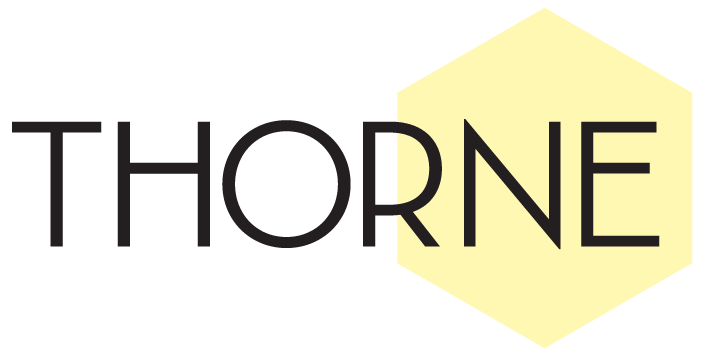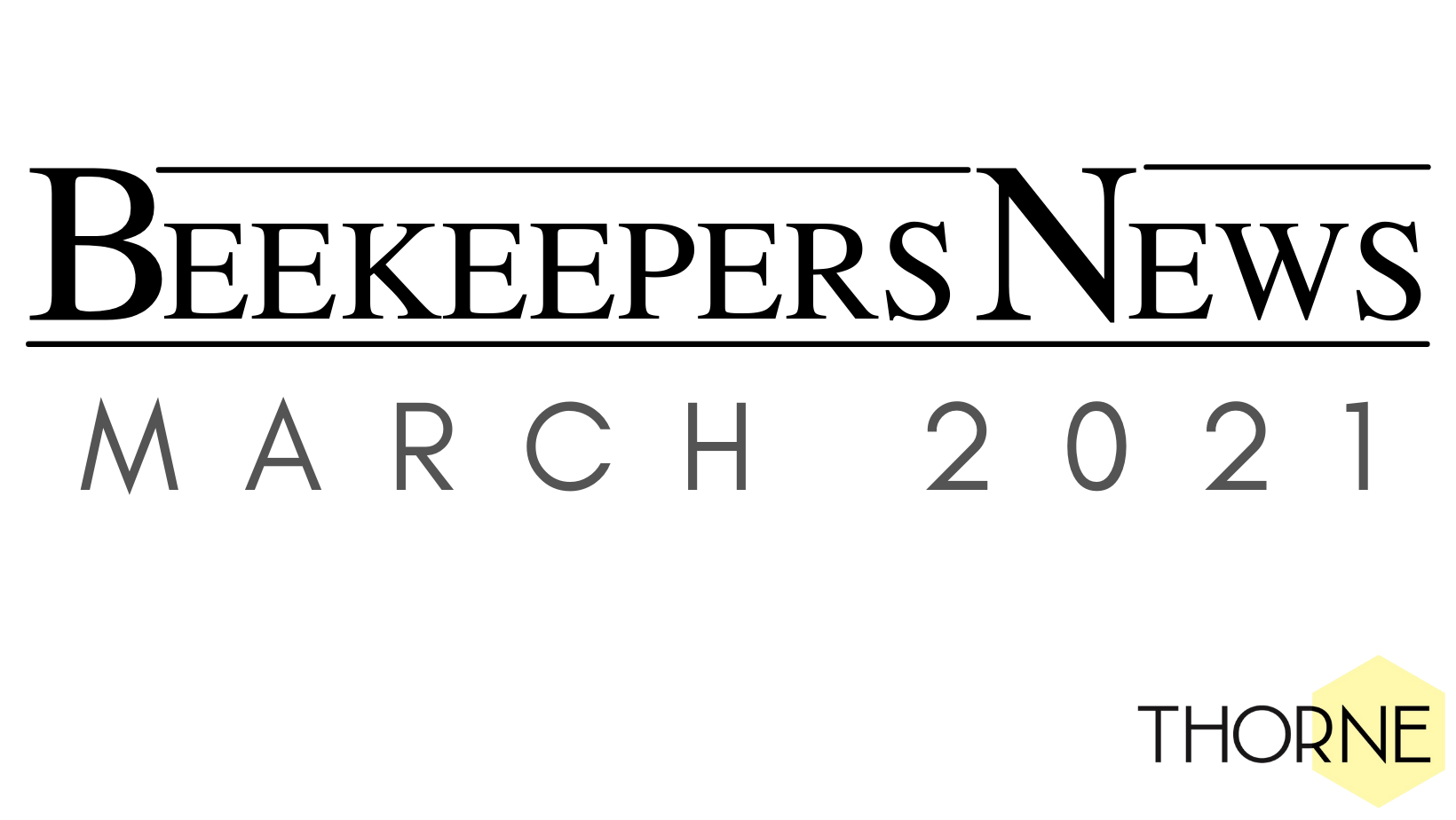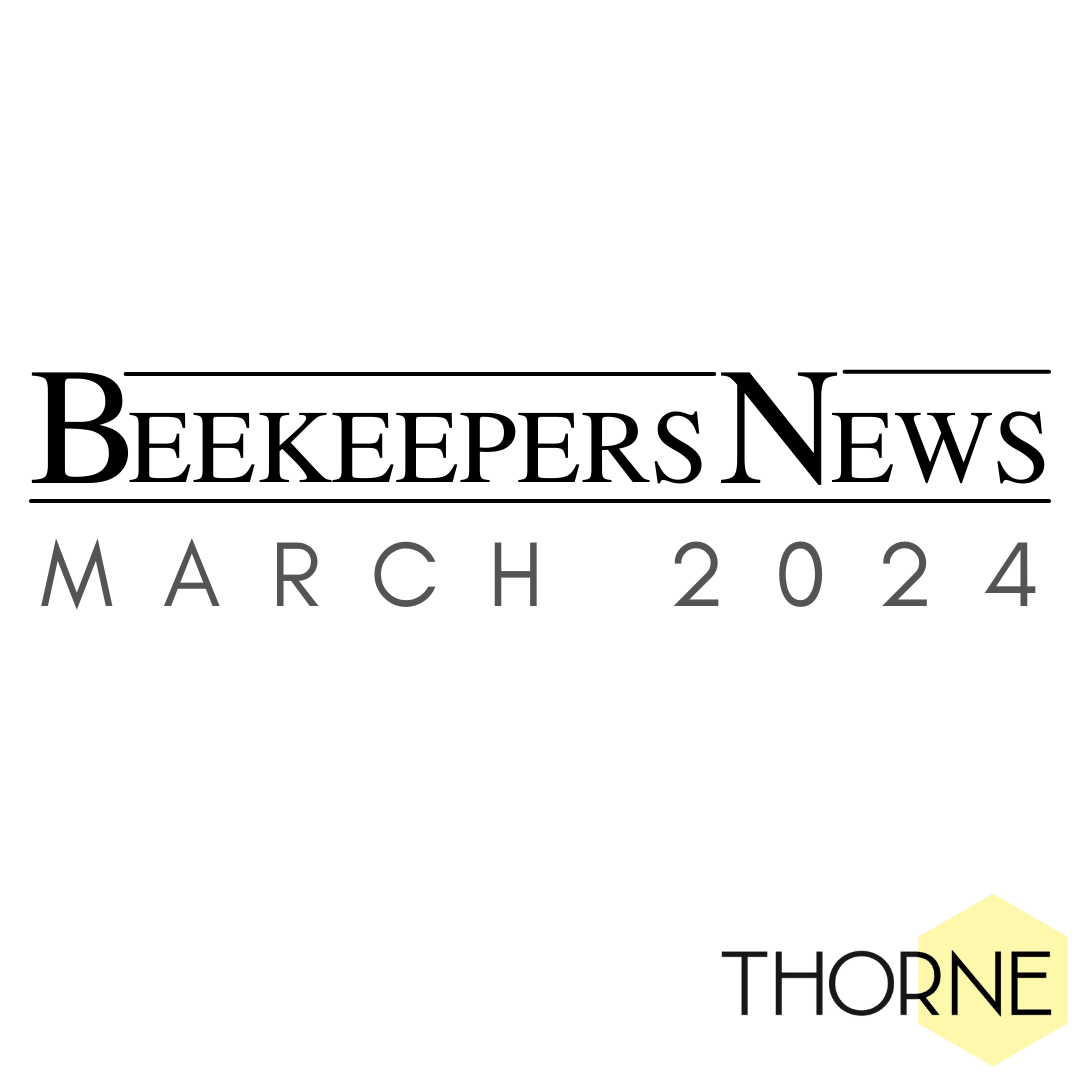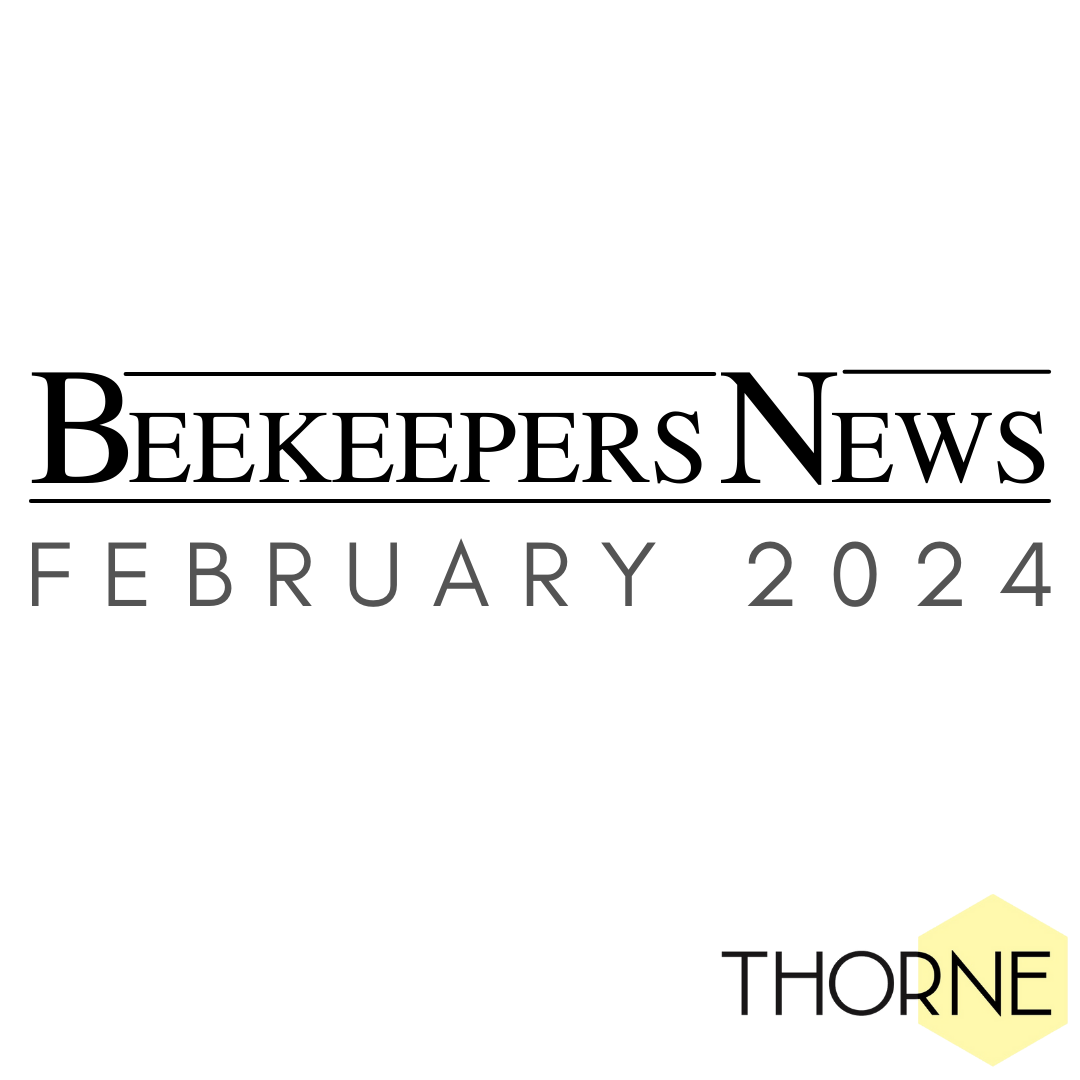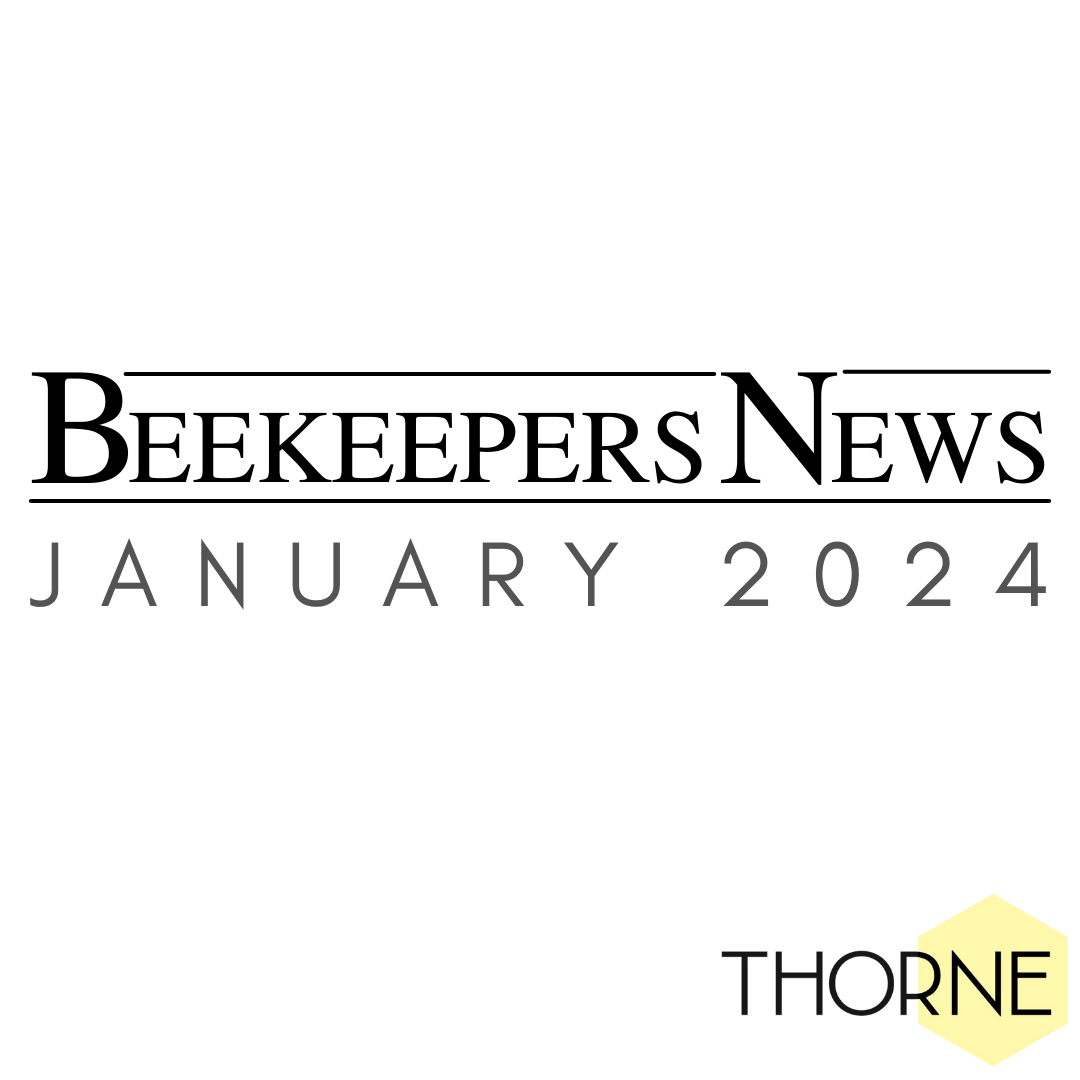As the sun starts to peep through the clouds, we are starting to look forward to a spring that will hopefully bring a positive year ahead.
As usual, this February we have been busy little bees getting catalogues out to you all. That said, if you have not received a copy of our new catalogue, please get in touch with us at sales@thorne.co.uk . As we are all still a little uncertain about what is possible for the rest of the year regarding meeting and courses, we still have our dedicated email address for you to directly contact our beekeeper. Feel free to drop us an email to beekeeper@thorne.co.uk with any questions, observations or beekeeping related issues. However, if you are looking at organising a beekeeping related course, we offer memory sticks along with our paper catalogues. These are pre-loaded with some useful PDFs and a digital version of our catalogue, perfect for course notes. For more information, contact Rebecca@thorne.co.uk .
We ran a successful sale on all our section products across the weekend that we should have been in Northern Ireland. Following the success of the section sale, we will be doing a similar sale on another product range towards to end of March, coinciding with when we should be attending the Welsh Convention – keep an eye out!!
We will be continuing to follow COVID guidelines at all our branches. As long as the dates currently published do not change, we will be opening our stores in England on the 12th April and in Scotland on the 5th April. Once open, we remind our customers to wear a face covering, use hand sanitizer provided, and keep 2m away from others where possible.
Wax Conversion
We are pleased to say that we are still offering our UK customers a chance to trade their wax in remotely. Simply send us your wax and let us know what you would like in exchange. We will weigh it in and prepare your foundation and then send it to you carriage free. More information can be seen below, including the address to send the wax to.
send it to you carriage free. More information can be seen below, including the address to send the wax to.
For more information on Conversion.
For more information on Straight Swap.
Send wax to:
E.H. Thorne (Beehives) Ltd, Beehive Business Park, Rand, Market Rasen, Lincoln, LN8 5NJ
If you are reading this, with a pile of crude wax, from the Republic of Ireland please drop us an email at sales@thorne.co.uk and we will see if we can help you.
Equipment Focus
March Special Offer – Api-dry and Microsoja
Now is the perfect time to give your bees an extra boost, so we are offering 20% off both Api-dry and Microsoja. These powder supplements can be added to high-quality sugar syrup to use as a patty to provide the colony with added protein. This might be necessary during food shortages, in preparation for winter, going in to spring and during queen breeding.
Both of these supplements are GMO-free and include all 10 amino acids essential to bees. Despite the similarities, the supplements contain different quantities of protein and vitamins so it is therefore advised to use both Api-dry and Microsoja in the same patty to get the full coverage of amino acids. The differences between the two supplements are listed below.
Api-dry- Brewer’s yeast protein supplement
- Added vitamin B for brood development
- Protein content of between 40 and 46%
- Shelf life of 2 years
- Comes in 1kg and 5kg packages
Microsoja
- Soy protein supplement
- Protein content of 65%
- Shelf life of 18 months
- Comes in 1kg and 5kg packages
Depending on what it is intended to be used for, different quantities of each supplement should be used in each protein patty. For example, to give stronger colonies a boost in spring, a 16% protein patty should be given. This will be more solid and less palatable for the bees but more nutritious than the 8% patty. For smaller colonies or for autumn feeding, an 8% protein supplement should be given. This will be stickier than the 16% patty but will be sweeter and more attractive to the bees. The recipes for both of these are outlined below:
For a 16% protein patty, mix together:
- 300g icing sugar
- 50g Api-dry
- 230g Microsoja
- 20g vegetable oil
- 400g sugar syrup
For a 8% protein patty, mix together:
- 300g icing sugar
- 120g Api-dry
- 60g Microsoja
- 20g vegetable oil
- 500g sugar syrup
As the 16% patty is more solid, this can be rolled into balls and then flattened between two pieces of greaseproof paper. Cut some nicks into the paper and place face down on top of the brood frames. The 8% patty, being more liquid, should be placed inside a sealed bag, pierced with some small holes and then placed on top of the frames face down.
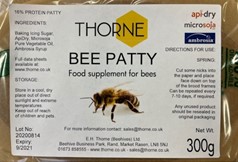
Want something ready to go?... We have done the hard work for you and ready-made Bee Protein Patties are available to purchase. These are priced at £3.30 each, or £30 for 10.
Equipment Focus
Safety equipment for treatments
Instead of just advising you what to use, we thought we would share with you the safest ways of using certain treatments.
 Active ingredient: Amitraz
Active ingredient: Amitraz
Wear beekeeping protective clothes including gloves when handling this treatment. Wash hands after use. Do not smoke, drink or eat during application.
 Active ingredient: Oxalic acid
Active ingredient: Oxalic acid
Can be used as a trickle or vaporisation treatment. Wear beekeeping protective clothes, face mask, gloves and protective glasses. Vapours can be especially harmful so a suitable facemask must be worn when vaporising. Wash hands after use with soap and water. Do not smoke, drink or eat during application.
 Active ingredient: Tau-fluvalinate
Active ingredient: Tau-fluvalinate
Wear beekeeping protective clothing and gloves when handling Apistan strips. Avoid contact with skin, mouth and eyes. Wash hands thoroughly with soap and water after handling strips. Do not smoke, drink or eat during application.
 Active ingredient: Thymol
Active ingredient: Thymol
Wear protective beekeeping clothes, chemical resistant gloves, protective goggles and face respirator. Do not inhale. Can cause skin irritation and eye injury. Wash hands with soap and water after use. Do not smoke, drink or eat during application.
 Active ingredient: Thymol
Active ingredient: Thymol
Wear protective beekeeping clothes, chemical resistant gloves, protective goggles and face respirator. Do not inhale. Can cause skin irritation and eye injury. Wash hands with soap and water after use. Do not smoke, drink or eat during application.
 Active ingredient: Formic acid
Active ingredient: Formic acid
Wear beekeeping protective clothing and chemical resistant gloves when handling the product. Wash hands with soap and water after use. Do not smoke, drink or eat during application.
 Active ingredient: Oxalic acid dihydrate
Active ingredient: Oxalic acid dihydrate
Wear beekeeping protective clothing, acid-proof gloves and safety glasses. Wash hands with soap and water after use. If contact occurs, wash skin with soap and plenty of water immediately. Do not smoke, drink or eat during application.
 Active ingredient: Oxalic acid dihydrate / formic acid
Active ingredient: Oxalic acid dihydrate / formic acid
Wear beekeeping protective clothing, acid-proof gloves and safety glasses. Wash hands with soap and water after use. If contact occurs, wash skin with soap and plenty of water immediately. Do not smoke, drink or eat during application.
Active ingredient: Acetic acid
Wear beekeeping protective overalls, rubber gloves, face respirator and goggles. Highly corrosive. Will corrode concrete and burn skin. Avoid contact with the eyes and fumes being inhaled into the lungs. If contact occurs, wash skin or eyes with soap and plenty of water for 15 minutes and seek medical advice. If you have inhaled or ingested acetic acid, seek medical advice. Do not smoke, drink or eat during application.
Active ingredient: Sulphur dioxide
Wear beekeeping protective clothing, gloves protective goggles and face respirator. Avoid breathing fumes and use only in well ventilated areas. Can cause skin irritation and eye injury. Wash hands with soap and water after use. Do not smoke, drink or eat during application.
Ask the Expert
Pollen and how to collect it
What is pollen?
Pollen is a powder that flowers produce. It comes in many different colours, mostly in shades of orange and yellow but can be found in red, green, brown and even black. It is the male fertilizing agent of flowering plants, trees, grasses and weeds, which means it is necessary for flower reproduction.
As honeybees and other insects move from flower to flower collecting nectar and pollen for themselves, they also inadvertently transfer pollen grains from the anther of one flower to the stigma of another i.e. from male to female parts, fertilising the flower. This is the flowers’ way of reproducing and is known as pollination.
Honey bees need pollen for their colony. As luck would have it, they have hairy bodies to which the pollen grains attach while they are visiting the flowers. These grains are subsequently pushed into their pollen baskets, packed down and flown back to their colony.
What do bees use pollen for?
Honey bees use pollen to feed their growing larvae as it contains large amounts of protein essential to growth. Throughout the year, foragers will come back with pollen baskets (corbiculae) full of different types of pollen and it can be quite a sight to behold! Sometimes there are so many bees laden with pollen returning to the hive that some of it falls onto the floor outside or onto the landing board.
The Sheffield BKA have a useful chart that you can use to identify which flowers your bees have been visiting, just from looking at the colour of the pollen: http://www.sheffieldbeekeepers.org.uk/tools/pollen-chart/
Pollen is stored in the hive, just like nectar and honey, to use at a later date when needed. Worker bees mix it with honey and saliva and then leave it to ferment a while. This makes bee bread. When it is ready, the bread is then fed to older worker or drone larvae.
How do you collect it?
As bees work extremely hard to collect pollen and as it is essential to their colony growth, collecting it from them should only be done sparingly. Outlined here are two ways in which you can collect pollen.
 The first method is to attach this Fairweather Pollen Trap to the front of your hive. On returning from their foraging activities, the bees climb through the holes in the pollen mesh. The holes are large enough for the bee to get through without hurting themselves, but the pollen is knocked off onto the floor, which also has holes in. The pollen falls through these holes into the pollen basket underneath. As the name suggests, this trap should only be used in fair weather as it will not keep the pollen dry in wet or damp conditions and should only be used for an hour or so. You may be surprised how much you can catch in just one hour of good weather. Once you have finished, you can either take the whole trap off the front or simply remove the pollen mesh insert so the bees can enter freely.
The first method is to attach this Fairweather Pollen Trap to the front of your hive. On returning from their foraging activities, the bees climb through the holes in the pollen mesh. The holes are large enough for the bee to get through without hurting themselves, but the pollen is knocked off onto the floor, which also has holes in. The pollen falls through these holes into the pollen basket underneath. As the name suggests, this trap should only be used in fair weather as it will not keep the pollen dry in wet or damp conditions and should only be used for an hour or so. You may be surprised how much you can catch in just one hour of good weather. Once you have finished, you can either take the whole trap off the front or simply remove the pollen mesh insert so the bees can enter freely.
 Another way you can collect pollen is to use a floor trap. This can be used in any weather but still must only be used as a pollen trap for a couple of hours maximum. Essentially the same mechanism as the Fairweather trap, once assembled, the bees climb through a mouseguard-like strip which removes the pollen from their legs. It falls through the holes in the floor and is caught in an easy to remove, ventilated basket underneath.
Another way you can collect pollen is to use a floor trap. This can be used in any weather but still must only be used as a pollen trap for a couple of hours maximum. Essentially the same mechanism as the Fairweather trap, once assembled, the bees climb through a mouseguard-like strip which removes the pollen from their legs. It falls through the holes in the floor and is caught in an easy to remove, ventilated basket underneath.
Why do it?
Aside from simply finding out what your bees have been foraging on, you may want to eat it! Pollen contains very few calories or fat, but lots of protein and carbohydrate. Just one tablespoon provides hundreds of nutrients including vitamins and flavonoids.
It is therefore widely recognised to have many health benefits to humans, including but not limited to:
- relieving inflammation
- working as an antioxidant
- boosting liver health
- strengthening the immune system
- working as a dietary supplement
- easing symptoms of menopause
- reducing stress
- speeding up healing
You can add it to food like yoghurt, porridge or smoothies, though sometimes it can taste a little like what the bees have foraged on – give it a taste test before you sprinkle bean pollen onto your cornflakes (yes, this was one of the more interesting breakfasts I have tried…).
It can also be ground down as a powder supplement or into a capsule. These tend to be sold for an extortionate price at health food shops – much better to harvest it fresh from your own hive!
Beekeeping Blog
 February has been a mixed bag really – we’ve had some really cold spells with snow, some windy days and finally some warmer weather towards the end of the month. We have done a couple of checks on the bees this month to make sure they are alive and well. One job was to check the colonies had enough food on top and we did this first by hefting the hive and then lifting off the roof to take a peek at the fondant we had placed on during our last visit. It is always interesting to see how each colony varies in the amount they take. You can see in this photo that the bees were still up in this bag of fondant, feeding well from it.
February has been a mixed bag really – we’ve had some really cold spells with snow, some windy days and finally some warmer weather towards the end of the month. We have done a couple of checks on the bees this month to make sure they are alive and well. One job was to check the colonies had enough food on top and we did this first by hefting the hive and then lifting off the roof to take a peek at the fondant we had placed on during our last visit. It is always interesting to see how each colony varies in the amount they take. You can see in this photo that the bees were still up in this bag of fondant, feeding well from it.
 This month we noticed that Thorne’s gardens seem to have a lot more crocuses this year than in previous years and the bees, despite it being fairly chilly, were very active collecting pollen from them! If you look closely, you may see a couple of bees on these beautiful crocuses. We were very happy to see this as it means that not only are they getting out and about, but it may also indicate that there is a need for extra pollen within the hive i.e., maybe the queens are starting to lay.
This month we noticed that Thorne’s gardens seem to have a lot more crocuses this year than in previous years and the bees, despite it being fairly chilly, were very active collecting pollen from them! If you look closely, you may see a couple of bees on these beautiful crocuses. We were very happy to see this as it means that not only are they getting out and about, but it may also indicate that there is a need for extra pollen within the hive i.e., maybe the queens are starting to lay.
Therefore, as an additional boost, we also gave the bees the Api-Dry and Micro-Soja mix from Vetopharma to feed the bees some pollen substitute. We made up both the slushy and firm patties and placed them on the tops of the brood frames. Where we have double brooded colonies, we placed the patties in between the boxes to give the bees the best chance to access it. The added protein at this time of year going into spring will make sure they have pollen to feed on when they can’t get out to the crocuses. Here you can some of the firm patties made up and ready to go.
 We have also experimented with the Api-dry and Micro-soja mix as a dry powder apiary feed. This is a popular way of feeding pollen substitute overseas and seems to be gaining momentum. It is not open wet feeding which uses syrup and can cause mayhem and robbing in the apiary. Powder pollen substitute is put out in a feeder that bees then come and collect from, much like a concentrated source of pollen found in a patch of flowers for example. This is especially useful during a pollen dearth or when robbing is a problem later in the season. From the research we have done, it appears that unlike with syrup, feeding powder pollen can actually prevent robbing as the bees continue to stay busy collecting pollen rather than fighting each other at their hive entrances. So, if it works, we may be able to add this feeding method to our repertoire. There are obviously pros and cons as with any type or method of feeding so we will give it a go see how we get on.
We have also experimented with the Api-dry and Micro-soja mix as a dry powder apiary feed. This is a popular way of feeding pollen substitute overseas and seems to be gaining momentum. It is not open wet feeding which uses syrup and can cause mayhem and robbing in the apiary. Powder pollen substitute is put out in a feeder that bees then come and collect from, much like a concentrated source of pollen found in a patch of flowers for example. This is especially useful during a pollen dearth or when robbing is a problem later in the season. From the research we have done, it appears that unlike with syrup, feeding powder pollen can actually prevent robbing as the bees continue to stay busy collecting pollen rather than fighting each other at their hive entrances. So, if it works, we may be able to add this feeding method to our repertoire. There are obviously pros and cons as with any type or method of feeding so we will give it a go see how we get on.
This may be our last few weeks of ‘quiet time’ until the autumn, so for now we continue to plan, organise and get things set up for the season ahead before the bees get busy and so do we!
Bees on a Budget review
The team over at Black Mountain Honey have reviewed our Bees on a Budget kit. The video is well worth a watch if you are thinking of purchasing, or have recently purchased one of the kits. They go through everything included, how to put it all together, and what they think of the kit!
Bees for Development Update
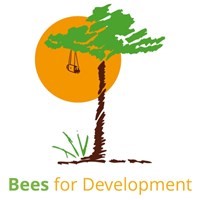 Our Bees Give Back
Our Bees Give Back
As the beekeeper’s charity, we strive to make life better for people in the poorest nations during these tough times. Covid is causing unexpected consequences for people who already faced severe poverty. There are now thousands more whose chances of making a living, raising a family and keeping children in school are much diminished. Our partner organisations in Ethiopia, Ghana and Uganda are continuing their work – and their services are in greater demand than before due to COVID-19.
Our Bees Give back is a campaign to enable beekeepers to support our work through your beekeeping passion. Whether you buy our tamper proof seals, buy a T shirt, or simply donate, you can help. Visit beesfordevelopment.org, or see our leaflet posted with the latest Thorne's Catalogue.
We give talks: reminder
We are keen to provide talks to any beekeeping group – large or small, and wherever you may be! We offer talks about our philosophy, how bees alleviate poverty, beekeeping all around the world, sustainable approaches, or gardening for pollinators. Just drop us a line at info@beesfordevelopment.org or call us 01600 714848 and we'll be happy to arrange a Zoom or Teams talk.
Upcoming Events
Remote Wax Conversion and Straight Swap service Throughout March
Welsh Convention Sale March 26th – 29th
BBKA Convention Sale April 10th – 18th
